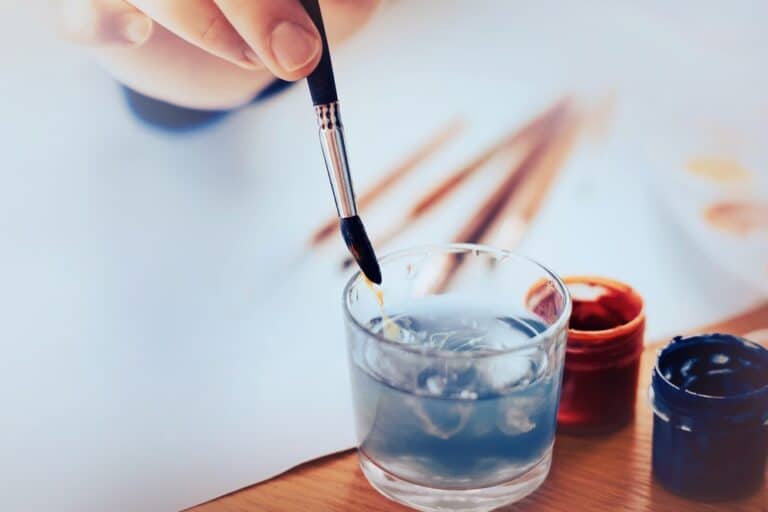Painting is one of the most popular hobbies; most people love spending time painting blank canvases to create artistic masterpieces. But cleaning the mess after finishing the painting session, especially the dirty oil paint brushes, is a hectic chore. Therefore, painters always look for remedies and tips to clean their dirty oil paint brushes. Cleaning oil paint brushes is necessary to preserve their quality, extend their lifespan, and maximize efficiency. This article will discuss nine practical tips and tricks for cleaning oil paint brushes, ensuring you’re ready for your next painting session.
Grab your paintbrushes and create inspiring fall paintings or pot paintings to fulfill your artistic cravings.
1. Clean Oil Paint Brushes Using a Towel
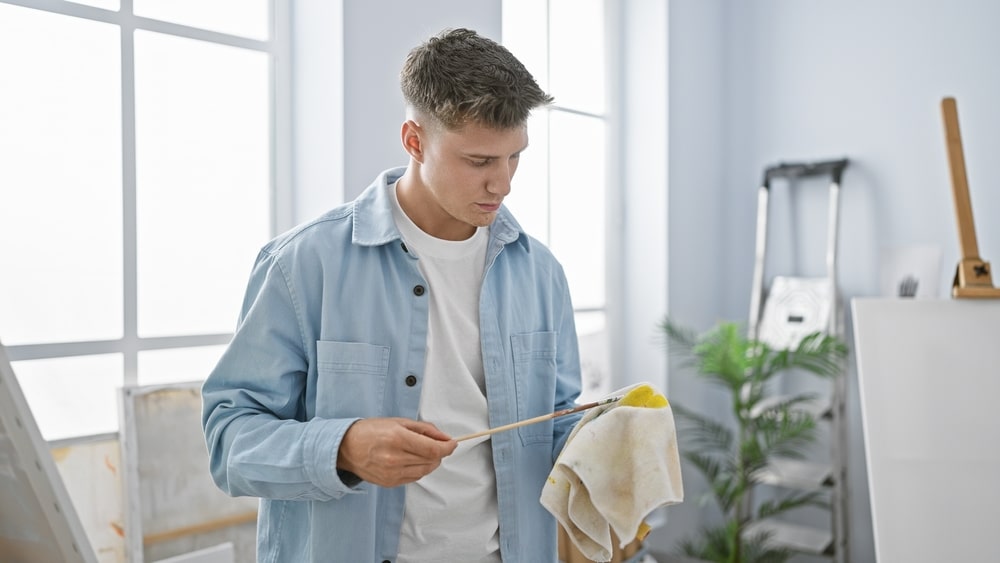
Oil-based paints are very stubborn and difficult to remove. Therefore, it is preferable to use acrylic paints for the base layers of paint since they are water-based and easy to remove from brushes.
One of the simplest techniques for cleaning oil paintbrushes without using any solvent is to remove any leftover paint on the brushes with a paper towel or cloth immediately after use.
2. Use Solvents and Thinners
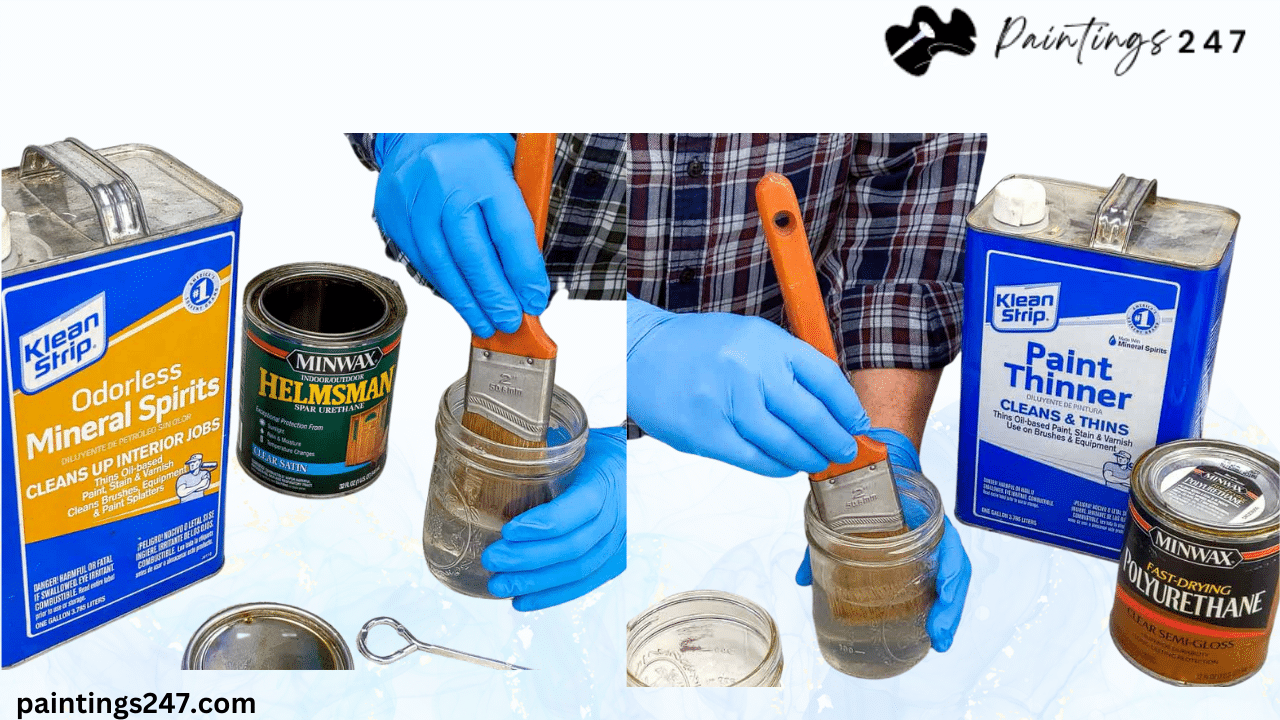
Solvents like mineral spirits and paint solvents are the most common brush cleaners for oil paints. When using these solvents, make sure they are safe for oil paints. A tip for the safe use of mineral spirits or paint solvents is to carry out the process in an open, ventilated area because they are toxic if inhaled.
- Pour a small amount into a container and dip your brushes in it.
- Swirl them around to ensure the solvent penetrates the bristles.
- Repeat the process until the brushes are cleaned thoroughly.
- Do not soak for long because these solutions can be harsh on the bristles and may damage them if used often or over an extended period.
- After removing all the paint, wash your brush with warm water and mild dishwashing soap to restore the bristles to their natural condition.
3. Winsor & Newton Brush Cleaner
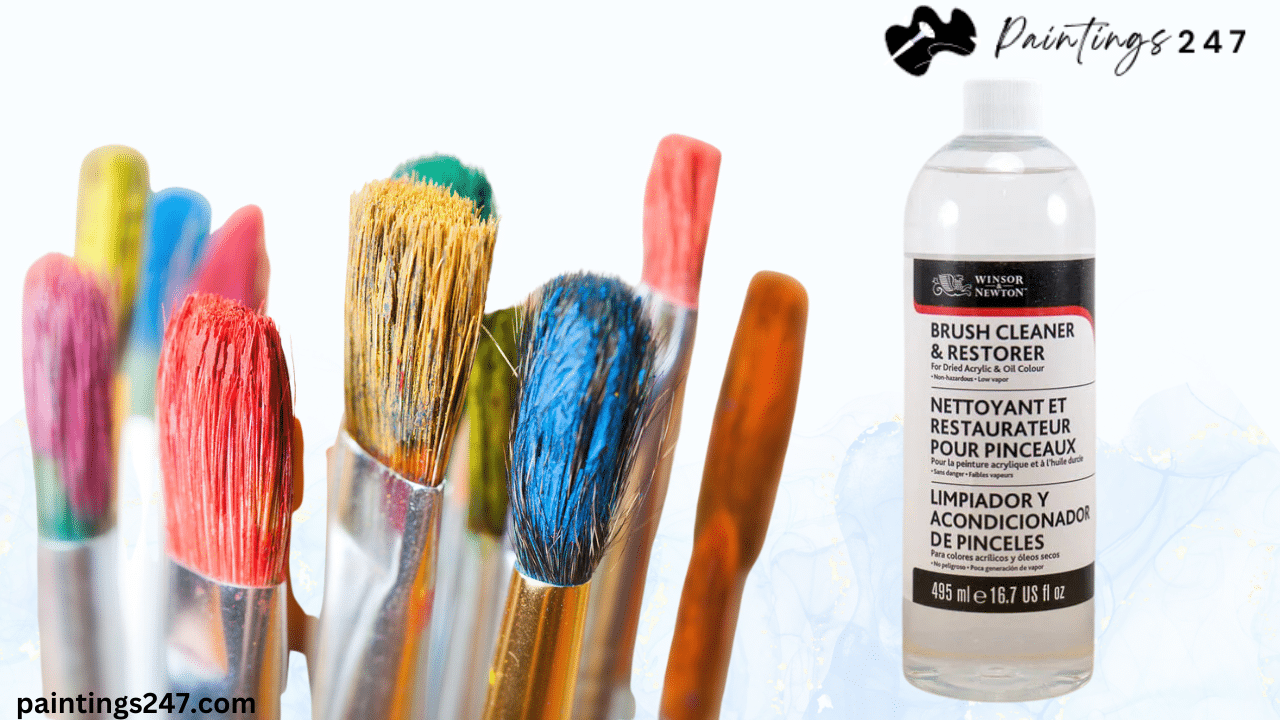
For stronger paint residue, consider using specialized brush cleaners such as Winsor & Newton Brush Cleaner and Restorer. These cleaners are designed to remove dried paint from brushes while restoring bristles to their original state.
4. Masters Brush Cleaner

For stubborn stains and more specialized cleaning, use Masters Brush Cleaner. This product is designed specifically for artists’ brushes and is highly effective at removing oil paint. Work the cleaner into the bristles and rinse with warm water. Repeat if necessary until the water runs clear. Winsor & Newton Brush Cleaner and Restorer or Masters Brush are specially designed for oil paint brushes.
5. Clean Oil Pint Brushes: Rinsing with Warm water
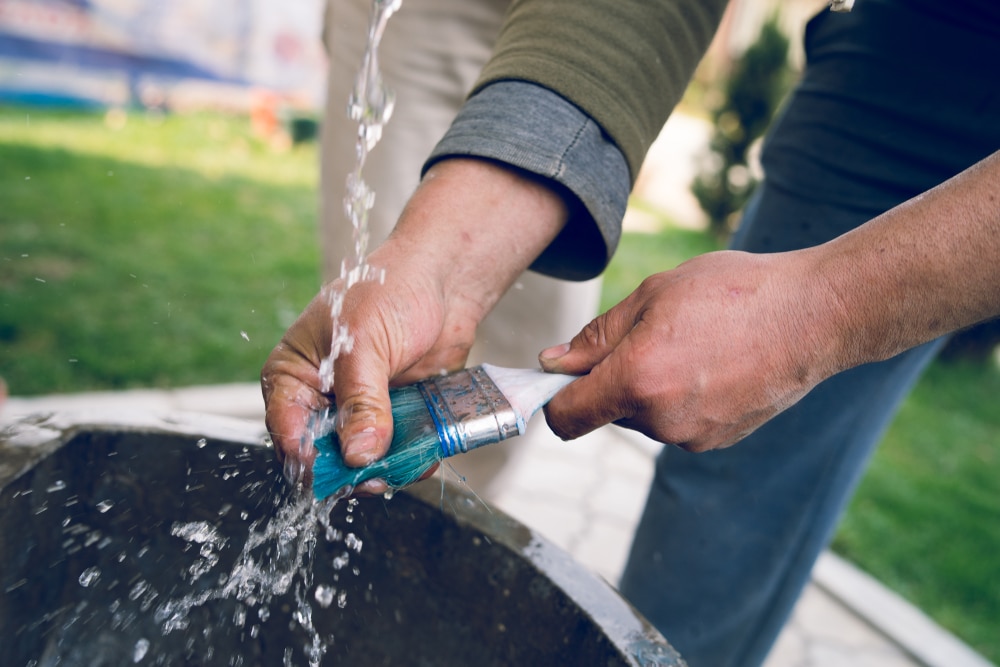
Start by wiping off as much excess paint as possible using paper towels.
- Rinse your brushes in warm water to remove the oil paint before cleaning them.
- Warm water softens and removes solidified oil paint from the brush bristles.
- Use your fingers to gently rub the brushes’ bristles as you rinse them under running water to release any paint that gets stuck.
6. Clean Oil Paint Brushes Using Dishwashing Soap
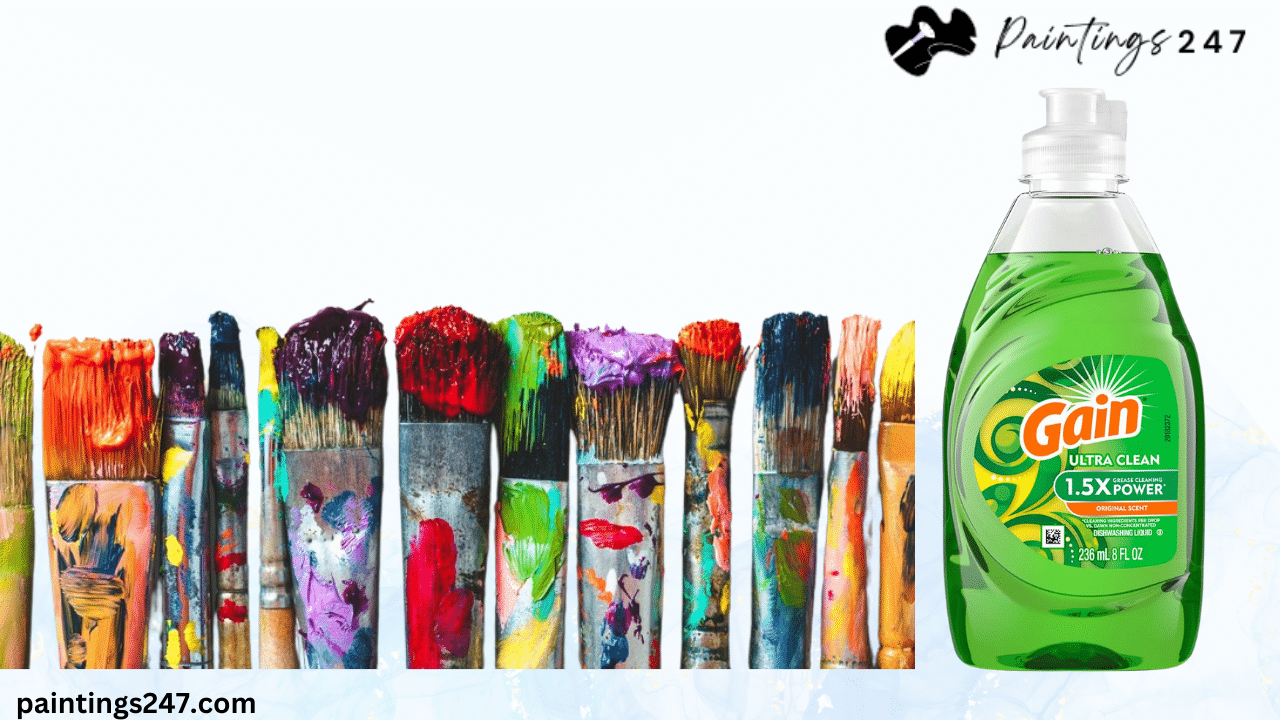
To remove the paint from the brush, gently wash the bristles with a bar of mild dish soap or a soap bar and rub the soap into the brush. Oil paint may be effectively removed with dishwashing without being harsh on the bristles. To clean oil paint, lightly massage a tiny bit of dish soap into the bristles of your brushes, creating a lather.
7. Essential Linseed Oil To Clean Oil Paint Brushes
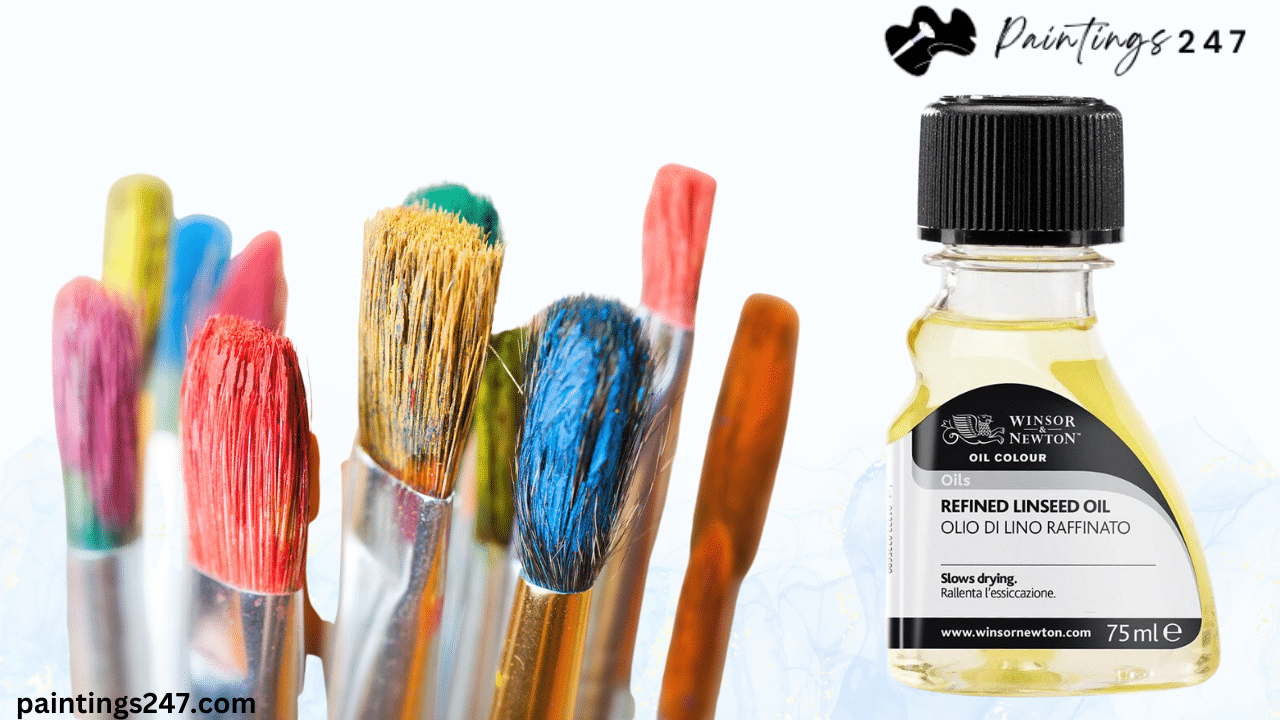
Brush bristles may eventually grow dry and brittle, particularly if they are regularly exposed to solvents. To improve brush functionality and prevent bristles from drying up, soak them from time to time in essential oils like linseed oil. In addition to linseed, sunflower, walnut, and olive oils can also be used.
- Apply a small amount of linseed oil to the bristles, leave it to rest overnight, and then brush off any excess.
- This will help to remove oil and soften the paint.
- Wipe the brush on a paper towel and repeat until the paint is gone.
Despite cleaning, the linseed oil keeps the bristles from drying out and getting damaged, making them soft. Winsor & Newton Refined Safflower Oil and Winsor & Newton Refined Linseed Oil are great examples of mediums that do double duty as brush cleaners.
8. Vinegar Treatment To Clean Oil Paint Brushes
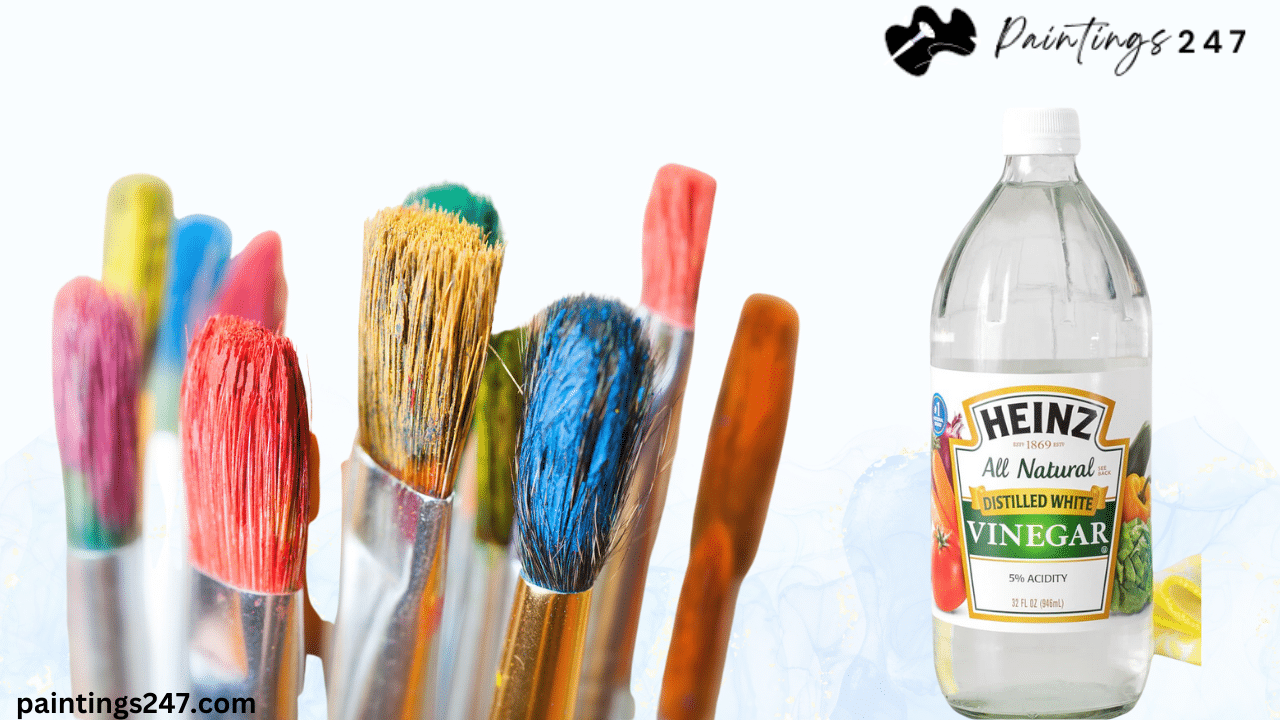
Vinegar is especially effective for paint brushes with hardened paint that has been there for some time.
Steps Of Cleaning
- Pour vinegar into a large pot.
- Soak your brushes in the vinegar so that the brushes are fully immersed in the vinegar solution.
- Put the pot on heat and let the vinegar boil for a few minutes.
- Remove the pot from the burner and let it cool for a few minutes.
- Take your brushes out of the vinegar.
- Remove the paint from brushes and bristles by gently rubbing with your hands.
- Rinse with clean water.
- Repeat the same process 2-3 times to fully clean your brushes.
9. Use Fabric Softener To Clean Oil Paint Brushes
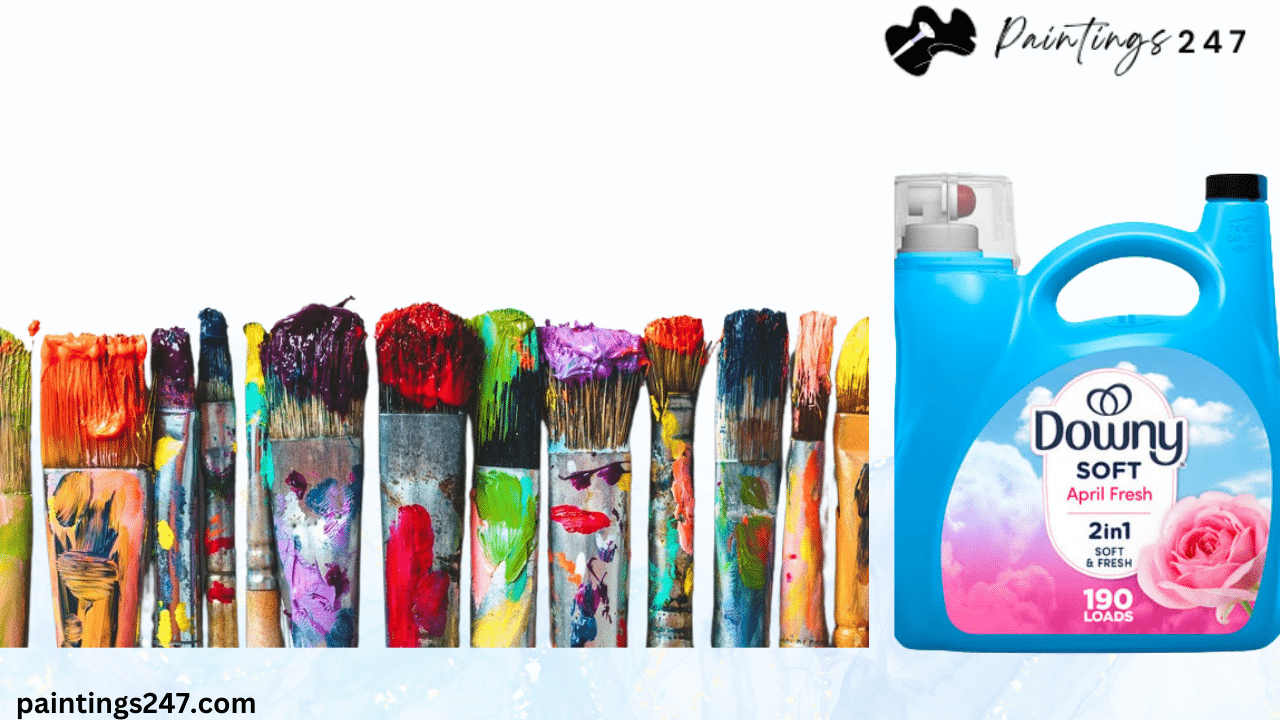
Adding fabric softener as a cleaning product to your paint brushes can quickly remove paint residues from your brushes.
Steps
- Pour a small amount of fabric softener and 4 Cups of warm water into your bowl or bucket. Mix them well.
- Gently roll your paintbrush in the mixture until the paint starts peeling off from the brushes. The removed paint will settle to the bottom of the bowl or bucket.
- Once your paintbrush has been cleaned, rinse any remaining softener solution.
- Wash your brushes with clean water.
- Dry your paintbrush and remove any remaining solvent on a paper towel or cloth.
- Reshape your brush bristles and store until you’re ready to paint again.
Conclusion
Keeping brushes clean and organized is more than just cleaning; it’s essential to a satisfying painting experience. Artists can easily handle the post-painting cleanup process by adopting the valuable techniques and tips mentioned above, knowing their brushes will be well-maintained and prepared for their next creative project. By following these methods, you can preserve the quality and longevity of the oil paint brushes.

